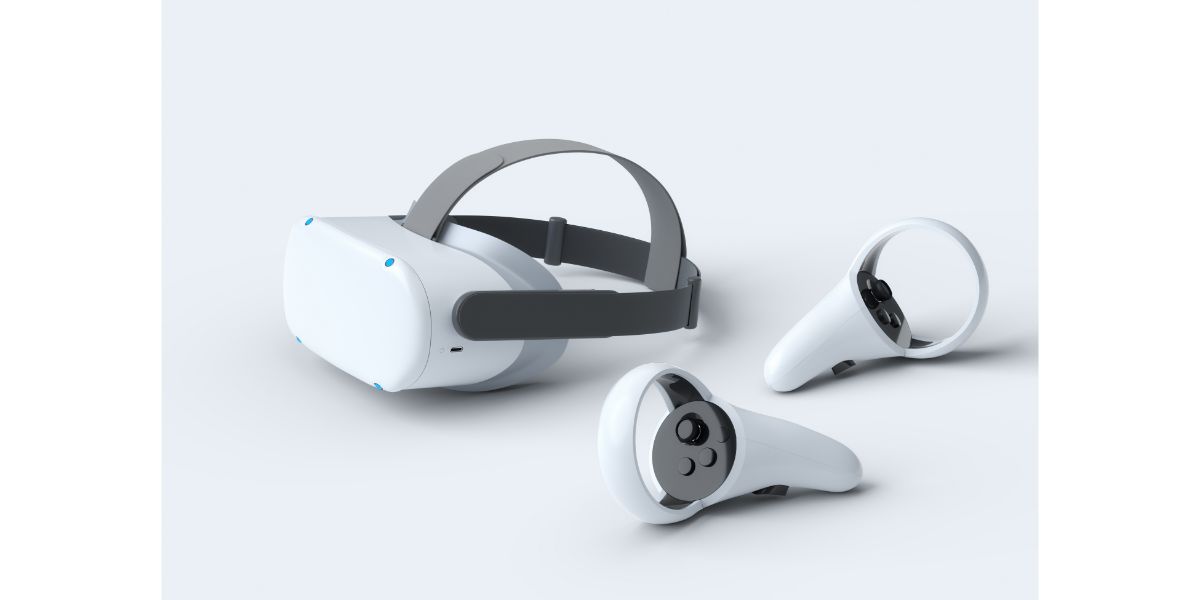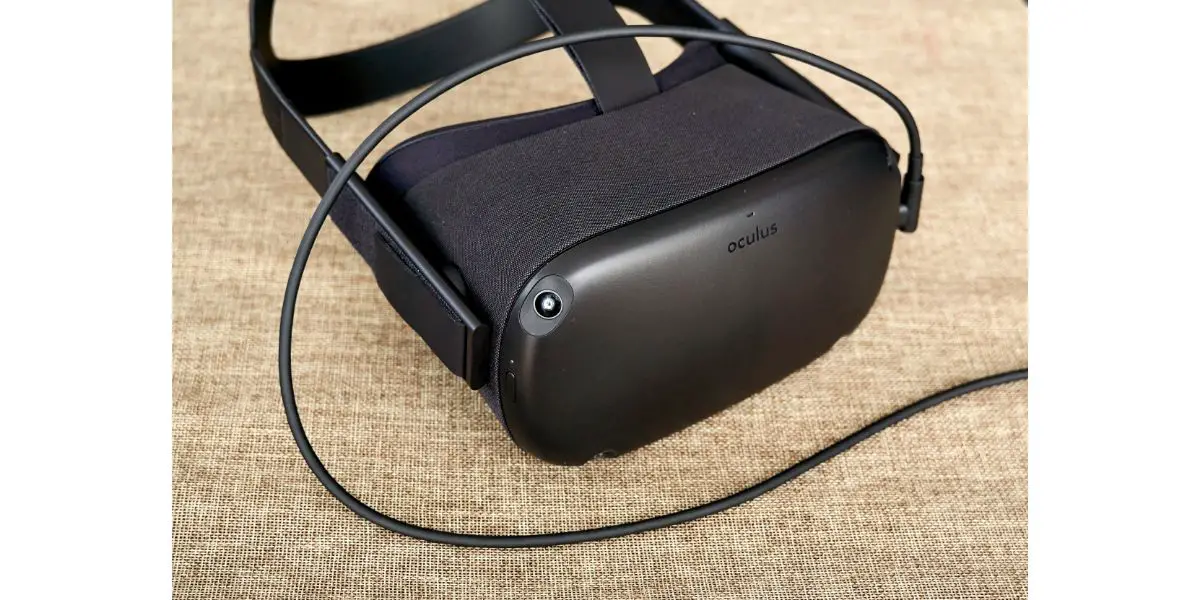Disclaimer: This post may contain affiliate links, meaning we get a small commission if you make a purchase through our links, at no cost to you. For more information, please visit our Disclaimer Page.
Although it is still a relatively new technology, virtual reality is one of the next logical steps in many video-based industries. In particular, it holds great potential for video games, which are themselves already highly interactive experiences for players.
Thanks to virtual reality, game development companies may be able to increase the overall immersion of the titles they create. First-person games do their best to make the player feel like they are in the middle of the action, but true virtual reality hardware may be able to augment this experience greatly.
Mostly, players get into virtual reality worlds using headsets like those in the Oculus line of products. The headsets feature goggles that wrap around the gamer, allowing them to see the rendered environment closer to a first-person view than a computer display or television screen.
While this can add some fun to gaming, it also requires some intense hardware to go along with it. The nature of the Oculus means that it uses battery power to run, and some players might be concerned about battery life on a single charge. We’ll cover battery drain in today’s article.
Table of Contents
Why Does the Oculus Battery Drain So Fast?
There could be several reasons why the battery on your VR device might seem to drain quickly. A few charging errors may happen in your case, and we can try to troubleshoot some of these issues in the following sections. Before we assume a problem, it is important to talk about battery life and the Oculus itself.
Some games or applications compatible with the Oculus may use quite a bit of processing power. When this happens, the battery may drain at a rate that seems quite high. This could be particularly true if you are used to high battery levels that drain slowly on other devices.
Simply put, barring any possible errors in the charging sequence, the Oculus family may drain power sources quickly because the hardware requests a lot of power at once. There are other issues we might associate with battery drain, but they could result from errors or improper device use. In general, it is a good idea to follow any recommendations from the manufacturer regarding charging or storage processes for any Oculus device.
How Long Should an Oculus Battery Last?
The true answer to this question can depend on several factors, but one of the main ones is how much energy a particular game might demand while the system is running it. As you might expect, more demanding games that require more system resources will pull more energy from the battery.
In turn, the power source will drain faster than it might if you were playing a simpler game. When we talk about battery life, we’re discussing it in terms of operating the Oculus on one full charge without adding to its percentages. This means you wouldn’t charge the device while using it.
Despite the true length of the battery’s life on one charge being somewhat variable, we can still make educated guesses as to how long it should last for one playthrough. Typically, you should be able to get between two and three hours of use out of your Oculus before it drains so much that you might need to charge it.
Once it drops below a certain percentage, the device will give you a low battery warning. If you are engaged in a game, it is a good idea to find a way to save your progress and charge the device before you use it again.
This level of battery life may seem relatively short compared to other devices, but most virtual reality hardware can be quite intense in its use of resources. For some, it is still long enough for a full gaming session, but others may wish to extend their Oculus battery life beyond this point.
How you accomplish this may depend on which mode you’re running the Oculus in, and we will review some tips in a later session. Note, however, that there are not many ways to extend the useful life of the Oculus on a single charge when you are playing a game. The hardware needs a lot of power to run a title on decent settings.
Does Casting Drain Oculus Battery?
Casting involves putting the display of a primary device on a secondary screen. Sometimes, you can do this while deactivating the screen on the primary device. In others, both screens might need to be active simultaneously.
The latter is true with VR headsets; you’ll experience a game through the goggles while a laptop or television display mirrors the content. Although the Oculus developers made it a mobile experience, casting does seem to drain the battery.
Most VR or Oculus communities seem to agree that casting impacts battery life. The hardware in the Oculus is trying to display gaming information on two screens at once, and it needs more resources to do this.
Therefore, it also pulls more power from the battery than it would if you were just using it as a headset. Precisely how much casting could drain the battery on your Oculus probably depends on what game you are playing.
Much like with battery drain, a title that doesn’t need many system resources should drain the battery at a slower pace. The same could be true for relatively simple games you decide to cast to a secondary display unit. You might cast some games that don’t seem to drain the battery in an obvious way during play.
Can I Leave My Oculus Charging Overnight?
Yes, it should be fine to charge your Oculus overnight. Doing so can make it easier to have the device ready when you need to use it. This is particularly true if you leave the Oculus in a mode that still drains some power when you are not using it actively.
Although some parts of the tech community fear overcharging the batteries on their devices, most modern technology that relies on batteries has built-in support to prevent this. When the battery on a device reaches its full capacity, a sensor detects this, and the circuit then cuts power going from the charger to the battery.
Once a battery is off the charger, it may drain slowly, losing a few percentage points of its overall capacity as it sits there. Once this level is low enough, the charger should kick in again, bringing the battery back up to its full potential.
One of the few possible issues with this system would only occur if a problem prevented the charger from cutting power when needed. However, this would result from some error in the manufacturing process for the battery itself, which is not common.
Although overcharging should never be a concern in any modern electronics that do not have faults in them, it is still a good idea to use some best practices when it comes to charging things like the Oculus. This device uses a form of lithium-ion batteries as a power source.
If batteries like these stay at full capacity for long periods, this can cause a sort of aging process within their circuits. In other words, keeping your batteries at maximum capacity all the time may prematurely reduce the number of charge cycles they have.
Similarly, it may make it harder for a battery to return to its full charge ceiling. All batteries will lose some of their full charges over time, but this usually takes a while.
As the batteries age, they may charge up to almost full rather than completely, and this percentage will go down over months or years while you use the power source. This process is a normal consequence of battery technology, but you may accelerate it by leaving a device plugged in all the time.
It is fine to charge your devices overnight. However, this is the case for things you use daily or fairly often. You know that you will take the unit off the charger soon. If you don’t plan to use your Oculus for days or weeks, it may be better for its battery not to leave it plugged in for all that time. Instead, try to plan to plug it in a day or so before you intend to use it.
How Can I Make My Oculus Battery Last Longer? 3 Tips
Two or three hours of play may be a bit short, but there are some tips you can try to make your Oculus VR device last a bit longer. This section covers some of the major ways to extend the battery.
1. Deactivate It Completely
The Oculus headset has different modes. Some modes power it down while keeping some processes active when you are not using it. This sort of thing can be great for waking it up quickly when you want to game, but it doesn’t do any favors for the life of the battery.
For the best results, turn off the Oculus completely when you are not using it. The battery will still drain over time, but at a much slower rate than if you chose to leave the unit in standby.
2. Use a Proper Link Cable
The developers of the Oculus meant for it to be a mostly cable-free experience for gamers. While this is very intriguing, you might miss out on converting some interesting computer games to a more VR-friendly experience.
You can play titles that aren’t on your headset by hooking it to a computer via a cable. The official link cable for the Oculus may work best here, and it has the added bonus of giving some juice to your device’s battery simultaneously.
3. Connect an External Battery
You may already be familiar with power banks that charge your devices whenever you’re out and about. Fortunately, you can get similar battery packs that will give juice to the Oculus while you are playing it.
This is different from charging the device using the main power source. Instead, you’re draining an external battery to extend the life of the one in your Oculus. There are even official battery packs you can purchase.
Can I Play the Oculus While It’s Charging?
You could use the Oculus while charging if you wanted to, but doing so could come with some limits. The batteries for devices like these may suffer from heating up while they are expending energy to power the system and charge simultaneously.
Excess heat could shorten the overall life of the battery. Too much-concentrated heat inside the battery could also damage its internal components, making it harder to charge it efficiently.
Further, expanding or melting the battery may be possible if it gets too hot. Although these concerns may be minimal, all players should still use good judgment when deciding whether to simultaneously utilize and charge the Oculus.
Conclusion
Virtual reality can be a fascinating way to explore some of the latest games and experiences developers have crafted for consumers. The Oculus headset family is one way to get some of these experiences, but it comes with a relatively short battery life. You can use some of our recommendations to get the most out of your headset before it needs a break to charge.


